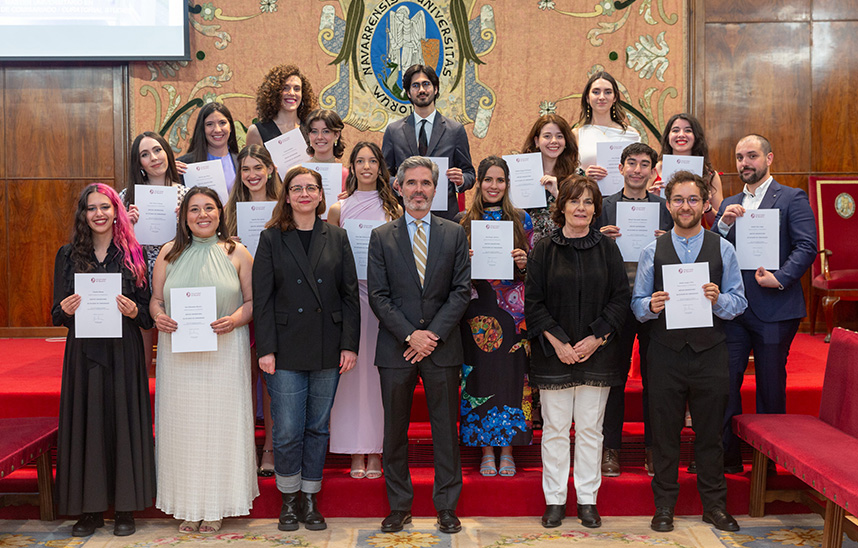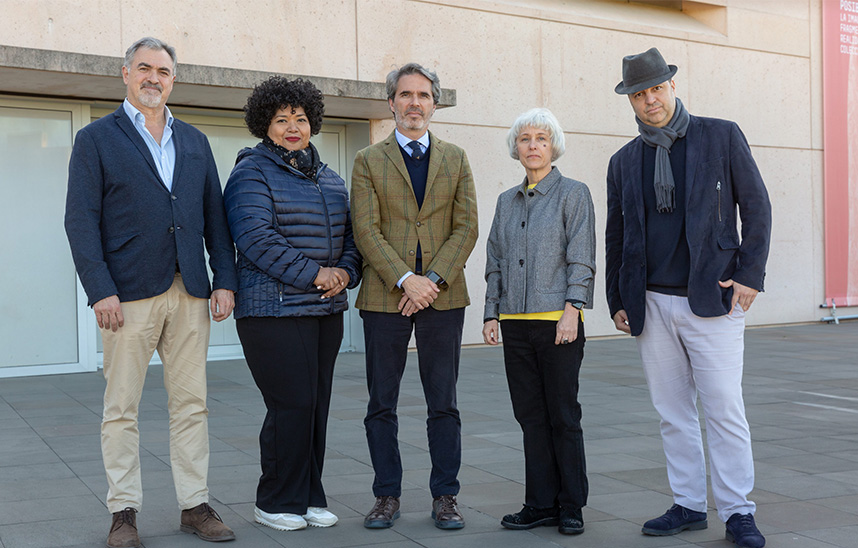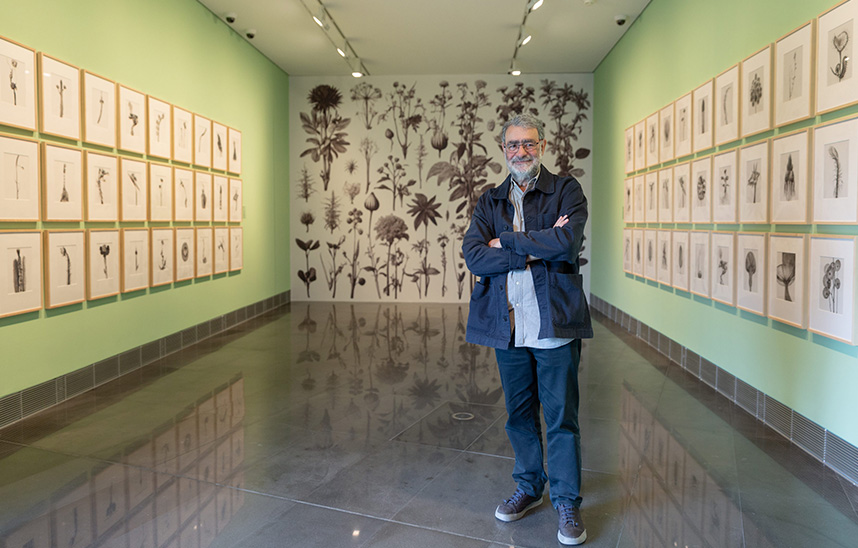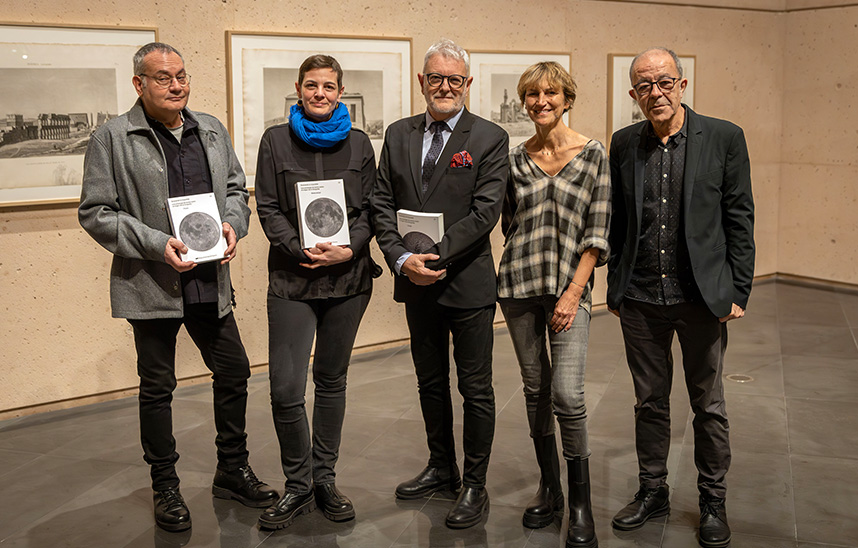noticia_MUN_2021_04_14_ana_teresa_ortega
Ana Teresa Ortega, award National Photography 2020, at MUN: "I talk about the construction of the report and the need for its constant rebuilding".
The artist opens 'Past and present, the report and its construction', a exhibition that reflects on the individual and collective report and gathers her works from the 90s to the present day.
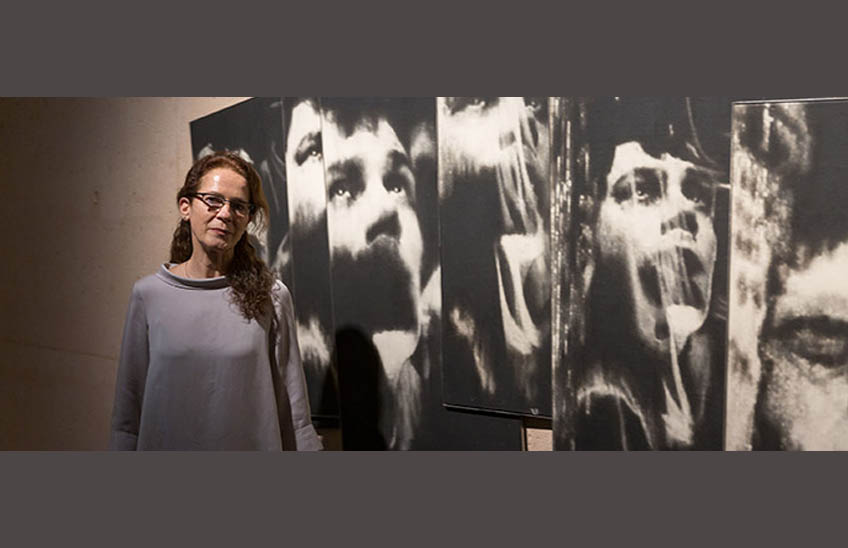
FotoManuelCastells/Artist Ana Teresa Ortega next to one of the works of her exhibition "Past and present, the report and its construction" at the MUN.
14 | 04 | 2021
Ana Teresa Ortega, award National Photography 2020, presented this Wednesday at the Museo Universidad de Navarra the exhibition Past and present, the report and its constructionwhich covers her works from the 90s to the present, some of them unpublished to date. In the words of the artist, born in Alicante in 1952, "it is the first time you can see this selection of projects creating synergies and relationships between them, dialoguing in an exhibition context".
La sample, co-produced with the Consorci de Museus de la Comunitat Valenciana and curated by Pep Benlloch, is the result of the public call of the Consorci de Museus Trajectòries, which aims to review the career of artists and collectives of the Valencian Community, highlighting the work of creators like Ana Teresa Ortega and their contributions to Spanish contemporary art. In it, the author invites reflection on issues such as the construction of individual and collective report , exile, identity and literature as the guardian of the report.
DIVERSE AND COMMITTED WORK
With a chronological approach, the exhibition allows to know in depth this photographic work, diverse and committed, which can be visited on the -1 floor of the Museum until October 10. At the presentation, the artist was accompanied by Pep Benlloch, curator of the sample, and Valentín Vallhonrat, director artistic of the Museo Universidad de Navarra.
In his speech, Vallhonrat stressed that this is a sample in which the visitor will find "magnificent findings" in an exhibition project that "deals with issues that are difficult to name, such as the historical report , which is our emotional report , where we come from and what we are". He also invites the public to "stop, reflect and enjoy".
For his part, the curator stressed that "being able to contemplate these projects as a whole financial aid us to see the choice of media according to the idea he wants to convey. It exemplifies how he has been using the supports and how they have evolved". Thus, the sample brings together photography, photo-sculpture, projections and installations.
Trained in sculpture, but passionate about photography since its inception, Ortega explained that "the only way to combine both expressive resources was to expand photography, to leave the framework, the support. In this sense, he recalled that, in his beginnings, he resorted to "opaque images, printed on canvas, and later on transparent supports, methacrylates and glass that acquired a certain visual lightness. The choice of support makes it easier to insert the viewer because they work almost like mirrors in which we see ourselves reflected.
Likewise, Ortega has indicated that the installation works allow him to "talk not only about the report as a shaper of our collective identity, but also about the written culture. I was able to base my work on books, on the figure of reading, on bookstores and libraries as repositories of report". Along these lines, proposal also includes a series dedicated to "illustrious writers and thinkers who represent the writing of the 20th century, united by their condition as exiles, forced or voluntary".
In this line, he also pointed out that the photograph expanded on the wall allows him to "speak of a construction of the report and the need for its constant rebuilding. It is often fragile and it is easy to lose it. That is why we need to rebuild it each time. As a symbolic figure, we use the image of a Library Services and we symbolize the accumulated deposit of the report as a conformer of the human being".
The sample also includes a series of projects that cover the SecondRepublic, the Civil War and Franco's dictatorship. "As apprentices of history, we see many gaps and voids to fill. In these projects there has been an attempt to fill them, question them, make them visible and learn from them." Thus, Ortega travels in these works through prisons set up in the postwar period, public works born of the forcedwork and scenarios of scientific exile.
In total, the exhibition, which can be visited without a fixed pathway , includes the following series: Photo-sculptures; Figures of exile; The Library Services, a metaphor of time; Gardens of the report; Thinkers; Silenced Cartographies; Of forced labor; Places of knowledge and scientific exile; and Shadowy presences, again the report.


